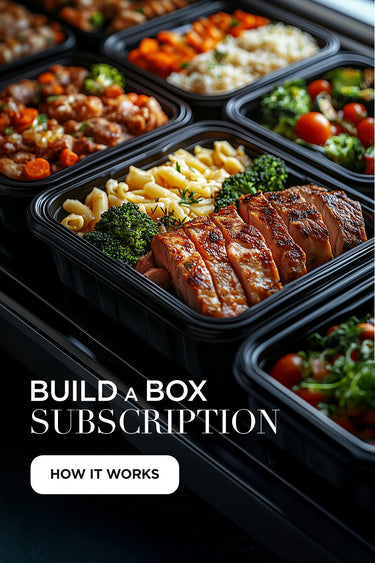Can You Eat Healthy on a Budget? Yes, Here’s How

Eating well does not have to mean spending more. Even with grocery prices going up, it is still possible to build balanced meals without going over budget. You just need to know what to look for and how to make it work in your own kitchen.
It is not about fancy ingredients or complicated recipes. It is about using smart staples, avoiding waste, and keeping things simple.
Common Challenges with Budget-Friendly Eating
Healthy eating often gets written off as too expensive before it even starts. That is usually because of what people think healthy looks like. Organic labels, supplements, or meals with a dozen fresh ingredients can give the wrong impression.
Perception vs. Reality
The belief that nutritious food always costs more is common, but not entirely true. What drives up the bill is usually convenience. Pre-cut produce, bottled sauces, or frozen health meals that still come with added sugar and sodium increase the cost quickly.
When you focus on basic ingredients that can be used in multiple meals, your grocery list stays affordable without giving up nutrition.
The Real Cost of Not Planning
Impulse buys and last-minute takeout usually cost more than most people realize. Even a twelve dollar lunch several times a week adds up fast. Cooking at home a few times a week can stretch your budget further and give you more control over what is in your food.
Affordable Nutrient-Dense Staples That Go a Long Way
You do not need dozens of ingredients to eat well. Some of the most affordable foods are also the most versatile and filling. Keeping a few on hand makes it easier to pull meals together quickly without needing to shop again midweek.
Pantry and Freezer Heroes
-
Dry beans and lentils are inexpensive and full of fiber and protein. They work in soups, stews, salads, or wraps.
-
Oats cost pennies per serving and can be used in breakfast, baking, or blended into smoothies.
-
Brown rice or quinoa give you slow-digesting carbs that pair with almost anything.
-
Eggs are a reliable source of protein and can be used at any meal.
-
Frozen vegetables do not spoil and are picked at peak ripeness, making them just as good as fresh for many meals.
-
Canned tuna or salmon provide long-lasting protein that does not need refrigeration and works in sandwiches, salads, or grain bowls.
These items form the base of dozens of different meals. They also reduce how often you need to shop, which cuts down on unplanned spending.
Tips to Save Without Sacrificing Quality
It is not just what you buy. It is how you buy it. You can eat better and spend less by building a few habits that keep food waste low and grocery trips intentional.
Shop in Bulk and Freeze Extras
Buying dry goods like oats, rice, and lentils in larger quantities brings the price per serving way down. For meat and fish, buy family size packs then portion and freeze what you will not use right away.
Freezing does not just apply to protein. You can freeze bread, cooked rice, soups, chopped vegetables, and even herbs.
Choose Seasonal Produce
Fresh fruit and vegetables cost less when they are in season. They also tend to taste better and last longer. If you are unsure what is in season, notice which items are on sale or displayed in larger quantities. That is often a good clue.
Frozen produce is another smart option. It is picked and frozen quickly so it retains its nutrients. Use it in stir fries, soups, and egg scrambles.
Cook at Home More Often
Cooking does not mean committing hours in the kitchen. Even simple meals like veggie stir fry, scrambled eggs, or a pot of chili can be ready in twenty to thirty minutes. Cooking more often means you know what is in your food and get more servings for less money.
Meal Prep Without the Pressure
You do not need full containers lined up in the fridge. Prep a few basics like cooked grains, roasted vegetables, or shredded chicken. Having a few items ready lowers the chance of giving up on a healthy meal just because you are tired or short on time.
Budget-Friendly Meals That Still Feel Satisfying
Affordable meals do not have to feel like just getting by. The right combinations can feel just as filling and enjoyable as anything else on your menu.
Meals to Try
-
Veggie chili made with canned beans, diced tomatoes, and frozen peppers
-
Egg fried rice using leftover rice, frozen peas and carrots, and scrambled eggs
-
Lentil soup with garlic, onion, celery, and toast on the side
-
Oats with banana and a spoonful of peanut butter for a balanced breakfast
-
Tuna salad served over greens or in a whole wheat wrap
Each of these meals can be prepped in under thirty minutes. You can batch cook most of them and eat leftovers through the week. They use pantry staples, do not require special tools, and hold up well in the fridge.
Keep It Flexible and Focused
There is no one perfect meal plan that works for everyone. What matters most is building habits that help you eat consistently without adding stress. Start with a few budget friendly meals each week. Keep ingredients simple. Avoid waste. Focus on meals that actually fill you up.
When you are consistent with basic meals, it becomes easier to manage your budget, save time, and still feel good about what you are eating.
Looking for a way to save time without slipping into takeout? FitEats meals are fresh, balanced, and made with real ingredients. Explore our Pickup and Delivery Menu or learn more about how it works to see how we help you stay on track even when life gets busy.

